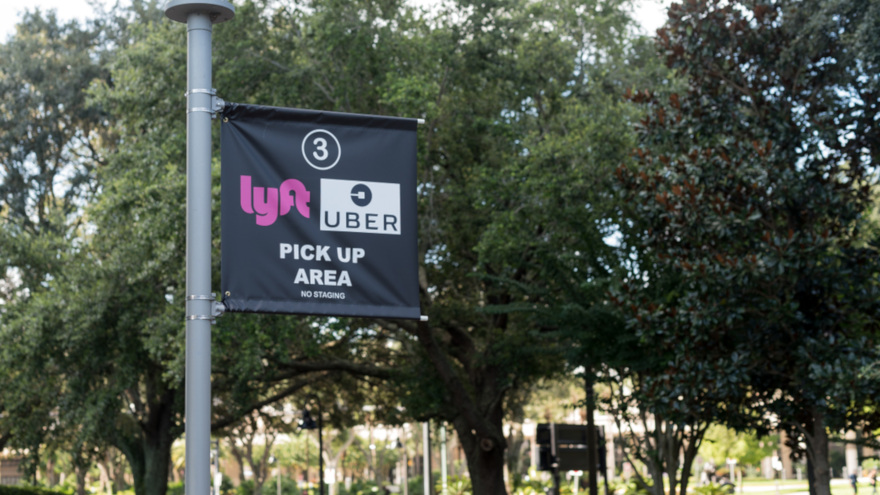Perhaps finance company executives might become a bit concerned when seeing the combination of slowing originations coupled with broad economic turbulence stemming from global trade clashes as well as more troubling signs emanating from markets beyond the United States.
Well, a pair of analysts from TransUnion looked at their latest data and reiterated the fundamentals about why the auto-finance market can and should remain healthy.
According to the auto-finance segment of the Q2 2019 Industry Insights Report from TransUnion, the total number of auto loans rose by 1.8 million in the last year, though year-over-year auto origination growth turned negative for the first time in five quarters.
Despite overall declines in originations, analysts found that growth occurred predominately in a straddle pattern and was focused in the super prime (+1.0%) and subprime risk tiers (+2.1%).
TransUnion determined serious delinquency rates (more than 60 days past due) stood at 1.23% in Q2, just 1 basis point higher than what was observed in Q2 of 2018 and the same level as Q2 2017.
As Gen Z grows older, analysts also discovered 1.3 million consumers with an auto balance were added to this category in Q2; a higher volume of new participants than millennials and Gen X combined.
“Auto affordability continues to pose a challenge for consumers with factors such as increased new vehicle pricing and plateauing terms contributing toward more expensive monthly payments,” said Satyan Merchant, senior vice president and automotive business leader at TransUnion. “The weakening demand has resulted in a slowdown of origination growth and an overall softening in the market.
“Industry forecasts indicate new vehicle sales will fall below 17 million this year for the first time since 2014,” Merchant continued in a news release. “Despite this trend, performance remains strong with delinquencies keeping steady year-over-year.”
Before embarking on a new position within the credit bureau, TransUnion’s Brian Landau also shared his assessment of the company’s latest data, reiterating how the growth of Gen Z consumers taking on auto financing is an important tailwind.
Others tailwinds to help auto financing mentioned by Landau included favorable interest rates thanks to the recent actions by the Federal Reserve as well as a healthy supply of used vehicles. That used-vehicle inventory also prompted Landau to explain why that factor is likely to be important for the auto-finance industry maintaining a positive course in light of the investment world traveling a bit of a roller-coaster stemming from the trade clash involving the U.S. and China.
“Say the tension between the U.S. and China increase and tariffs continue to be added on goods,” Landau gave as a hypothetical to SubPrime Auto Finance News. “What you'll see is an even greater shift toward used vehicles because used vehicles in the market today are not going to be subject to those tariffs. Where it’s going to impact consumers is around the cost of ownership, parts and labor, when they have to service vehicles over the next couple of years.
“Eventually, consumers are going to want to buy a new car. Cars will continue to age, and if the tariffs are to continue, it might force them to downsize a cheaper, less expensive vehicle,” he continued.
“But we all know transportation is fundamental, and it’s a lifeblood of the economy,” Landau went on to say. “You need to get around to work, pick up your kids, do your chores. People need a car. They might just delay a purchase if tariffs become a real issue, just like gas prices have been. If gas prices were to rise about $5 a gallon, people might consider a sedan versus an SUV. But I don’t think we’ve hit that trigger point.”
Q2 2019 Auto Loan Trends
|
Auto Lending Metric
|
Q2 2019
|
Q2 2018
|
Q2 2017
|
Q2 2016
|
|
Number of Auto Loans
|
82.7 million
|
80.9 million
|
77.4 million
|
73.3 million
|
|
Borrower-Level Delinquency Rate (60+ DPD)
|
1.23%
|
1.22%
|
1.23%
|
1.11%
|
|
Average Debt Per Borrower
|
$18,974
|
$18,700
|
$18,486
|
$18,177
|
|
Prior Quarter Originations*
|
6.7 million
|
6.8 million
|
6.7 million
|
6.9 million
|
|
Average Balance of New Auto Loans*
|
$21,418
|
$20,901
|
$20,415
|
$20,013
|
*Note: Originations are viewed one quarter in arrears to account for reporting lag. Source: TransUnion
Coinciding with the release of its second-quarter performance, Consumer Portfolio Services also discussed a structural reorganization of sales representatives and origination staff to cater to dealerships in its origination network more effectively.
CPS reported this week that it closed the second quarter with more than 8,000 active dealers booking paper with the subprime finance company. CPS leverages a staff of approximately 250 employees located at three branches in Irvine Calif., Las Vegas and Orlando, Fla.
In an effort to improve dealer service and product “usability,” CPS said in a message to SubPrime Auto Finance News that it has reorganized its staff. Prior to making this alignment change, CPS explained dealers would generally be connected to the next available buyer from a pool when they contacted the finance company. With the re-alignment in place, CPS said dealers will work with the same staff on each of their applications and loan packages.
“Our goal is to have dealers working with the same loan origination staff at CPS whenever possible,” said Teri Robinson, who is senior vice president of originations at CPS.
“We expect this move to strengthen dealer relationships and build familiarity for dealers with CPS, plus help our staff get to know dealers better,” Robinson continued. “Dealers need support, flexibility and quick answers to their questions when they contact CPS. We’re confident they will like our improved alignment strategy.”
Q2 results as revenue drops, costs decrease
Also this week, CPS announced earnings of $1.8 million, or $0.08 per diluted share, for its second quarter that ended June 30. This figure compares to net income of $3.2 million, or $0.13 per diluted share, in the second quarter of last year.
The company reported its Q2 revenues came in at $86.3 million, a decrease of $13.0 million, or 13.1%, compared to $99.4 million for the second quarter of 2018. However, the company trimmed its costs as CPS said its total operating expenses for the second quarter were $83.6 million, compared to $94.7 million a year earlier.
CPS noted its Q2 pretax income for the second quarter of 2019 was $2.8 million, which represented a drop of 40.5%.compared to pretax income of $4.7 million in the second quarter of last year.
For the first six months of 2019, CPS tallied up its total revenues of $174.6 million, which were down compared to $202.9 million for the six months of 2018. That’s a decrease of approximately $28.4 million or 14.0%.
CPS pointed out its total expenses for the first six months of 2019 were $169.1 million, a decrease of $24.6 million, or 12.7%, compared to $193.7 million for the six months of 2018.
The company’s pretax income for the first six months of 2019 came in at $5.4 million, compared to $9.2 million for the same period in 2018. Net income through the first half of 2019 was $3.5 million compared to $6.3 million a year earlier.
During the second quarter of 2019, CPS said it purchased $250.1 million of new contracts compared to $243.0 million during the first quarter of 2019 and $214.7 million during the second quarter of last year.
The company's receivables totaled $2.399 billion as of June 30, an increase from $2.393 billion as of March 31 and $2.329 billion as of June 30 of last year.
CPS mentioned its annualized net charge-offs for the second quarter constituted 7.82% of the average portfolio as compared to 7.58% for the second quarter of last year. Its delinquencies greater than 30 days (including repossession inventory) represented 14.83% of the total portfolio as of June 30 as compared to 10.07% as of June 30 last year.
“We are pleased to report that this quarter represented our fourth consecutive quarter of year over year increases in quarterly originations volume,” said Charles Bradley, Jr., chairman and chief executive officer.
“In addition, since Q3 of 2018, we have seen consecutive quarterly increases in the coupon rates on new receivables and lower fees paid to dealers,” Bradley added in a news release.
CPS announces $243.5M senior subordinate asset-backed securitization
And in other company news released this week, CPS also announced the closing of its third term securitization of 2019. The transaction is CPS’ 33rd senior subordinate securitization since the beginning of 2011 and the 16th consecutive securitization to receive a triple-A rating from at least two rating agencies on the senior class of notes.
In the transaction, the finance company qualified institutional buyers purchased $243.5 million of asset-backed notes secured by $244.1 million in automobile receivables originated by CPS.
The sold notes, issued by CPS Auto Receivables Trust 2019-C, consist of six classes. Ratings of the notes were provided by Standard & Poor’s and DBRS, and were based on the structure of the transaction, the historical performance of similar receivables and CPS’s experience as a servicer.
| Note Class |
Amount
(in millions) |
Interest Rate |
Average Life
(years) |
Price |
S&P Rating |
DBRS Rating |
| A |
$105.1 |
2.55% |
.67 |
99.99782% |
AAA |
AAA |
| B |
$41.5 |
2.63% |
1.79 |
99.99392% |
AA |
AA |
| C |
$35.4 |
2.84% |
2.50 |
99.97830% |
A |
A |
| D |
$31.2 |
3.17% |
3.31 |
99.99390% |
BBB |
BBB |
| E |
$24.7 |
4.30% |
4.05 |
99.98450% |
BB- |
BB |
| F |
$5.6 |
6.94% |
4.14 |
99.98681% |
B |
B |
CPS said the weighted average coupon on the notes is approximately 3.36%.
The finance company mentioned the 2019-C transaction has initial credit enhancement consisting of a cash deposit equal to 1.00% of the original receivable pool balance and over-collateralization of 0.25%.
CPS added the transaction agreements require accelerated payment of principal on the notes to reach overcollateralization of the lesser of 6.00% of the original receivable pool balance, or 16.00% of the then outstanding pool balance.
The company went on to say the transaction utilizes a pre-funding structure, in which CPS sold approximately $161.1 million of receivables at inception and plans to sell approximately $83.0 million of additional receivables during August.
This further sale is intended to provide CPS with long-term financing for receivables purchased primarily in the month of July, according to the company.
SubPrime Auto Finance News put Brian Landau on the spot a bit after TransUnion released its latest auto-finance data. The senior vice president and automotive business leader pondered the question about which of these milestones might happen first. Will the market surpass 100 million outstanding vehicle leases and installment contracts, or will the average auto debt per consumer surpass $20,000?
During a phone conversation this week, Landau divulged that the number of consumers already currently holding some form of auto financing is approaching 90 million, which is up from the 82.2 million that TransUnion officially reported as of the close of the first quarter. Landau explained that metric moving higher is “heavily reliant on just the growth of the population. The market is fairly saturated. Every household has at least one car today. I don’t expect that to grow any faster than the rate of population, to be honest.”
With those thoughts in mind, Landau suspects that the average amount of auto debt consumers are carrying could surpass $20,000; perhaps in the not too distant future, since TransUnion pinpointed the average figure at $18,845 as of the close of Q1.
“I will say that there are some drivers in place now to grow the average transaction price; the shift to SUVs from sedans and SUVs typically have a larger price tag,” Landau said. “In addition, people are looking at vehicles as an extension of the Internet-of-Things (IoT), connecting to their phones and other electronics. That’s going to add a higher and heftier price tag to the purchase.”
TransUnion reported that auto originations grew 1.7% in Q4 2018 and have grown year-over-year in each of the past four quarters, reversing the negative trend caused by the pullback in the market the second half of 2016 and full-year 2017. Landau pointed out that super prime and subprime borrowers led this growth, with Q4 2018 year-over-year increases of 5.2% and 4.4%, respectively.
“When we look at origination growth in those two segments (super prime and prime), they’ve been pretty consistent,” Landau said. “There has been positive growth for some time now, even during the pullback. My perspective is that as the lenders in the market were being cautious during the pullback period, there was a flight to safety to those segments of the market. Low delinquency and the need to grow the book profitably have driven a lot of the growth on that end of the spectrum. I’m not surprised. That’s been consistent with what we’ve seen over the last few quarters and for some period of time now.
“On the subprime segment, we’ve actually seen some large gains relative to what the origination growth was during the pullback,” he continued. “It seems like there is a little bit of a whip-saw effect going on in the subprime segment. I think that is due to the fact that lenders are feeling much more confident in this area of the credit spectrum, more than they did in 2016 and 2017. In fact, if we go back to Q2 (of last year), we start to see that positive gain exceeding 5% year-over-year relative to what it was just a year prior when it was 10% or more down year-over-year. That’s a large gain from the low end being down 10% to the upswing of positive 5% in the course of a four-quarter timeframe.”
Meanwhile, TransUnion determined serious borrower delinquency rates (60 days or more past due) continued to remain stable at 1.31% in the first quarter. Q1 2019 was the seventh consecutive quarter with a year-over-year delinquency variation of less than 10 basis points.
Landau closed by reiterating how stable the auto-finance market is as a maelstrom of media coverage is swirling and stemming from other parts of the credit world.
“There is a lot of clamor around other parts of financial services particularly around student lending, but auto is the third largest asset class before mortgage and student lending. And it is one of the most secure, having one of the lowest delinquency rates of all asset classes out there, second only to (home equity lines of credit). And it’s one of the fastest growing segments within financial services, second only to personal lending, which has been driven primarily by the fintech boom,” Landau said.
Q1 2019 Auto Loan Trends
|
Auto Lending Metric
|
Q1 2019
|
Q1 2018
|
Q1 2017
|
Q1 2016
|
|
Number of Auto Loans
|
82.2 million
|
79.7 million
|
76.4 million
|
72.2 million
|
|
Borrower-Level Delinquency Rate (60+ DPD)
|
1.31%
|
1.32%
|
1.30%
|
1.16%
|
|
Average Debt Per Borrower
|
$18,845
|
$18,581
|
$18,386
|
$18,065
|
|
Prior Quarter Originations*
|
6.7 million
|
6.6 million
|
6.7 million
|
6.7 million
|
|
Average Balance
of New Auto Loans*
|
$22,128
|
$21,678
|
$21,071
|
$20,598
|
*Note: Originations are viewed one quarter in arrears to account for reporting lag. Source: TransUnion.
Kroll Bond Rating Agency reported this week that its auto-finance indexes that watch both the non-prime and prime spaces moved in similar directions in April.
But a deeper look at the latest data showed some “slightly less sanguine results.”
Analysts indicated annualized net losses in KBRA’s Prime Auto Loan Index fell 5 basis points month-over-month and 12 basis points year-over-year to land at 0.60%. KBRA noted the number of borrowers more than 60 days delinquent declined 8 basis points month-over-month and 6 basis points year-over-year to 0.36%.
KBRA pointed out in its latest update that April marked the 15th consecutive month that net losses and delinquency rates have fallen on a year-over-year basis within its Prime Auto Loan Index.
KBRA went on to share that its Non-Prime Auto Loan Index for April showed a similar month-over-month trend with annualized net loses and 60-day delinquencies falling 129 basis points and 75 basis points to 7.18% and 4.20%, respectively.
On a year-over-year basis, analysts determined non-prime net losses declined 26 basis points in April, while 60-day delinquencies rose slightly, ticking up by 6 basis points.
“Although our indices showed improved year-over-year delinquency metrics during the March collection period, loan level data showed slightly less sanguine results,” said Brian Ford, who oversees structured finance research at KBRA.
“The number of prime and non-prime borrowers that went from 60-days delinquent to current in March came in at 24.8% and 21.5%, respectively. This is slightly lower than the 25.6% and 26.9% cure rate experienced in March 2018,” Ford continued.
“Meanwhile, the number of borrowers that were 60 days delinquent to start the month and were subsequently charged-off in March came in at 15.6% for prime loans and 22.0% for non-prime loans, versus 17.1% and 20.5%, respectively, one year ago,” he went on to say.
After reviewing first-quarter data connected with U.S. subprime auto loan asset-backed securities (ABS), S&P Global Ratings discovered cumulative net losses appear to have stabilized, albeit at “relatively high levels,” according to its newest report released on Tuesday.
On a segment basis, S&P Global Ratings said its subprime auto loan static index (ALSI) is showing that the 2016 vintage, with 27 months of data, is performing consistently with the 2015 vintage, as are the 2017 and first- and second-quarter 2018 vintages.
On an issuer basis, analysts noted loss deterioration abated with the 2017 vintage as the majority of the securitizers are reporting stable-to-lower losses on these securitized pools compared to those in 2016.
“These improvements appear to be correlated with the reduction in industry-wide subprime originations in 2016 and 2017 and the implementation of tighter credit standards,” analysts said in the report titled, Subprime Auto Loan ABS Tracker: Losses Have Stabilized, But Renewed Growth Bears Watching.
“However, renewed growth in subprime lending, which began in the second half of 2018, could intensify competitive conditions and lead to weaker performance,” they continued.
S&P Global Ratings shared five other key takeaways from the report, including:
• The upward ascent in subprime ALSI loss levels through 2015 and issuer-based loss deterioration through 2016 corresponded with the rapid growth in subprime financing and mounting competitive conditions from 2010 through 2015.
• Reduced subprime financing in 2016 and 2017, resulting from the implementation of tighter credit standards and operating procedures, paved the way for improved issuer-specific performance beginning with the 2017 vintage.
• Higher industry origination volume during the second half of 2018 may portend higher losses in the future.
• Credit enhancement levels have kept pace with the rise in losses, and upgrades continue to surpass downgrades by a wide margin.
• Subprime ABS issuers vary widely with their 2016 cumulative net losses ranging from a low of approximately 6% after 27 months to a high of 32%.
Analysts arrived at those assertions after determining performance in the U.S. auto loan asset-backed securities sector demonstrated seasonal trends as all prime and subprime performance metrics improved on a monthly and annual basis.
“The first quarter of the year marks the season of tax refunds, which consumers often use to pay down their loans,” S&P Global Ratings said in a separate news release.
“Since 2006, we have observed a month-over-month decrease in losses and delinquencies, and an increase in recoveries in February compared to January,” analysts continued. “February 2009 was the exception, when prime losses were 1 basis point higher than the January 2009 value of 1.92.”
“February was a strong performance month due to seasonal factors and several large issuers reporting year-over-year improved metrics,” analysts went on to say.
S&P Global Ratings reported that U.S. prime credit losses declined to 0.64% in February from 0.73% in January and 0.69% in February 2018, marking the 11th consecutive month of year-over-year improvement.
The firm indicated subprime losses decreased to 8.67% in February from 9.65% in January and 9.18% in February of last year.
Analysts pointed out recoveries improved year-over-year, rising to 55.98% from 53.91% for prime and to 41.41% from 39.21% for subprime.
S&P Global Ratings went on to mention the prime sector 60-plus-day delinquency rate decreased to 0.44% in February from 0.51% in January, and 0.46% from the year prior. The subprime 60-plus-day delinquency rate decreased to 4.98% from 5.63% in January, and 5.15% from the year prior.
“In March 2019, we lowered our expected cumulative net losses for 17 transactions, maintained them at prior levels for 10, and increased them for four,” analysts said.
Maybe now that both the first quarter and Tax Day are both in the rear-view mirror, perhaps the handwringing over the delinquency rate spotted at the end of 2018 can be completely squashed based on the newest default data shared on Tuesday by S&P Dow Jones Indices and Experian.
The auto finance reading of the March S&P/Experian Consumer Credit Default Indices dropped both on a sequential and year-over-year basis. Analysts pinpointed the March rate at 0.94%, which is 5 basis points lower than the previous month and 11 basis points below the year-ago level.
David Blitzer is managing director and chairman of the index committee at S&P Dow Jones Indices. Blitzer also pointed out that auto-finance defaults have been flat or decreasing since December, resulting in composite levels which have been little changed in first three months of 2019.
“Earlier concerns about auto loan defaults are behind us as seen in stable to lower default rates,” he said in a news released that accompanied the latest data.
Meanwhile, analysts determined the March composite rate — which represents a comprehensive measure of changes in consumer credit defaults — stayed unchanged from the previous month at 0.92%.
S&P and Experian went on to note the first mortgage default rate also remained unchanged in March, holding at 0.70% while the bank card default rate rose 20 basis points to 3.68%.
Looking by geography, analysts found that four of the largest major markets showed higher default rates in March compared to previous month.
Los Angeles produced the largest increase, rising 19 basis points to 0.70%. The default rate for Dallas climbed 4 basis points to 0.94%, while the rate for Chicago increased 3 basis points to 0.95%.
New York’s default rate edged 1 basis point higher to 1.06%.
Miami was the only city exhibiting a decrease, dropping 49 basis points to 1.58%.
Blitzer acknowledged March marked the fourth consecutive month where bank card default rates increased, though the rate still remains lower than it was one year ago.
“The economy and consumer spending are experiencing moderate growth with few significant consumer credit risks,” Blitzer said. “Sales of existing and new homes slowed in 2018, and mortgage rates pulled back slightly. Mortgage defaults should continue at their currently low levels.
"Most analysts, as well as the Federal Reserve, expect economic growth to continue at about 2%, somewhat slower than 2018 with minimal chance of a recession this year,” he continued.
“The movements of bank card credit defaults since 2015 exhibit a weak seasonal pattern: Default rates tend to peak in the second quarter and then decline slightly with a trough in the second half of the year. There is also a modest uptrend in default rates since late 2015,” Blitzer went on to say.
“In the 2015 fourth quarter, bank card defaults were 2.72% rising to 3.33% in the 2017 fourth quarter. Last year’s fourth quarter dipped to 3.17% before the rise resumed with 3.53% in the first quarter this year. While this pattern is becoming clear, there is not enough data yet to confirm the seasonal pattern statistically,” he added.
With all of the recent hubbub over delinquencies, auto finance defaults are remaining stable so far this year.
S&P Dow Jones Indices and Experian released data through February for the S&P/Experian Consumer Credit Default Indices, and the auto component remained unchanged at 0.99 percent.
In fact, the latest reading is actually 10 basis points lower based on a year-over-year comparison. The rate also has been below 1 percent for 10 of the past 11 months.
Meanwhile, analysts discovered the February composite rate that represents a comprehensive measure of changes in consumer credit defaults ticked up 2 basis points on a sequential basis to 0.92 percent. The reading stayed 4 basis points lower than the year-ago level.
S&P and Experian went on to note the bank card default rate rose 6 basis points to 3.48 percent, while the first mortgage default rate ticked up 1 basis point to 0.70 percent.
After seven straight months of decline, the latest update indicated bank card default rates now have increased for three consecutive months. This upward trend has been the primary contributing factor to the concurrent increase in the composite default rate, which has seen its rate increase for five straight months.
All default rates are lower compared to 12 months ago, according to S&P and Experian.
Turning to their data based on geography, analysts noticed four of the major market they watched monthly showed higher default rates in February compared to the previous month.
The rate for New York increased 6 basis points to 1.05 percent, while the rate for Chicago rose 4 basis points to 0.92 percent.
The default rate for Los Angeles was up 2 basis points to 0.51 percent, while the rate for Dallas inched 1 basis point higher to 0.90 percent.
The rate for Miami bucked the February trend, decreasing 12 basis points to 2.07 percent.
David Blitzer, managing director and chairman of the index committee at S&P Dow Jones Indices, reviewed the latest data and broader trends and offered this assessment.
“This month’s data show that four of the five cities tracked as well as all consumer credit default categories were higher in February,” Blitzer said. “This is more of a seasonal shift than a sign of rising default rates. Over the last several years, December, January and February have all experienced increases in default rates across cities and loan categories. Further, none of the figures suffered large increases compared to their levels of one year ago.
“Retail sales saw strong gains in January and auto sales continued at an annual rate of about 16.5 million vehicles. Any upward pressure on mortgage defaults stemming from the rise in home prices over the last few years is being offset by weakened sales of new and existing homes,” he continued.
“The overall economy is not expected to put any pressure on consumers’ financial condition,” Blitzer went on to say. “Employment and job growth continue to be quite strong and wages have recently seen some gains. The economy is settling into a stable growth path with anticipated GDP gains of 2 percent to 2.5 percent by most analysts in 2019.
“Two perennial sources of anxiety for economists and consumers are inflation and the unemployment rate,” he added. “Inflation remains around 2 percent and the unemployment rate is at or below 4 percent in recent data. As long as these figures remain steady, the Fed isn’t likely to shift interest rates and consumers should not have difficulty paying their bills, which could keep default rates close to current levels.”
Jointly developed by S&P Indices and Experian, analysts noted the S&P/Experian Consumer Credit Default Indices are published monthly with the intent to accurately track the default experience of consumer balances in four key loan categories: auto, bankcard, first mortgage lien and second mortgage lien.
The indices are calculated based on data extracted from Experian’s consumer credit database. This database is populated with individual consumer loan and payment data submitted by lenders to Experian every month.
Experian’s base of data contributors includes leading banks and mortgage companies and covers approximately $11 trillion in outstanding loans sourced from 11,500 lenders.
Experian’s Q4 2018 State of the Automotive Finance Market report showed that seven states closed this past year with 60-day delinquency rates of at least 1 percent.
Overall, analysts pinpointed the 60-day delinquency rate at 0.78 percent in Q4, which represented an uptick of 3 basis points year-over-year.
What Experian defines as finance companies — institutions that do not hold commercial deposits but fund vehicle installment contracts — had the highest rate for 60-day delinquency among the four categories of providers. Finance companies — which also often cater to subprime customers — saw its rate improve 10 basis points year-over-year to settle at 1.87 percent.
Experian also mentioned the 60-day delinquency rate for banks came in at 0.70 percent (up 14 basis points). For captives, it was 0.73 percent (down 2 basis points) and for credit unions, it was 0.26 percent (down 1 basis point).
Along with those seven states at or above 1 percent, Experian also highlighted the Top 10 states for 60-day delinquency as of the fourth quarter. That rundown included:
1. Maryland: 1.68 percent
2. Mississippi: 1.68 percent
3. Louisiana: 1.36 percent
4. Georgia: 1.03 percent
5. New Mexico: 1.03 percent
6. Alabama: 1.00 percent
7. South Carolina: 1.00 percent
8. Nevada: 0.92 percent
9. Texas: 0.90 percent
10. Arkansas: 0.89 percent
More consolidation in the recovery space arrived late on Tuesday as Automotive Intelligence Council member MBSi Corp. increased its collection of resources.
The provider of compliance-enabled repossession assignment management software and vendor management software announced the acquisition of My Recovery System and Vendor Transparency Solutions’ platforms. The company highlighted this acquisition allows MBSi to offer a single software ecosystem for repossession assignment management and vendor compliance management to recovery agents, forwarders and auto-finance companies.
The integration of My Recovery System’s back-office platform and Vendor Transparency Solutions’ web-based compliance management system with MBSi’s assignment volume, operating excellence and talent formalized what the company described as a “game-changing component” of MBSi’s overall solutions strategy.
“We are thrilled to be working with the My Recovery System and Vendor Transparency Solutions platforms and teams to provide a seamless software solution for the recovery industry,” MBSi president Cort DeHart said in a news release.
“By capitalizing on these easy-to-use platforms, we will be able to bring new efficiencies to the industry with a seamless software solution that includes routing, full back-office and compliance management. This, coupled with the talent of the teams, sets us apart to deliver real results,” DeHart continued.
Two leaders from My Recovery System and Vendor Transparency Solutions also described what the transaction means.
“I’m excited to be part of a growing company where designs and strategies bring efficiency and transparency to the auto finance recovery industry,” said Jeff Koistinen, founder and president of My Recovery System. “MBSi’s commitment to the recovery agents ties back to our collective mission to exceed the needs of agents.”
Vendor Transparency Solutions founder and president Max Pineiro added, “I couldn’t be happier to join the MBSi team as we work together to deliver next generation compliance management platforms for recovery agents, forwarders and lenders.”
MBSi indicated its teams will immediately begin working to integrate the platforms to provide data and secure access of sensitive consumer information. MBSi also said it will continue to partner with RISC, which provides vendor vetting, compliance training and lot inspection services.
MBSi is hosting a recovery agent user conference and appreciation event on April 17 at Texas Live!, an entertainment venue in Arlington, Texas, starting at 3 p.m. CT. The user conference is exclusive to recovery agents to learn more about the new platform, pricing and how to get started.
Recovery agents can register for the event here.
ACC Consumer Finance, a specialized indirect auto finance company, recently announced that it has selected Servicing Solutions as its primary servicer.
As a result of this agreement, Servicing Solutions will support ACC’s ride-hailing finance offering.
ACC Consumer Finance offers a fully integrated automobile financing platform geared toward ride-hailing drivers seeking to purchase vehicles from approved franchised and independent dealers throughout the nation.
“As we began to introduce and roll out ride hailing financing to auto dealers throughout the country, we knew we needed a seasoned servicing partner … one that has the experience and insight to truly understand our unique business model, and one that stays out in front of technological advancements and regulatory compliance developments,” ACC Consumer Finance chief operations officer David Colletti said in a news release.
“As we reviewed our options, it became clear that Servicing Solutions checks all the boxes and is without a doubt the right choice for ACC,” Colletti continued.
The newest client arrived on the heels of Servicing Solutions naming a new vice president of sales.
“We are excited to partner with the talented team at ACC,” Servicing Solutions president and chief executive officer Louis Ochoa said. “They are clearly filling a need in the ride hailing marketplace.
“By offering dealers increased revenue opportunities, while at the same time providing ride hailing drivers with an opportunity to purchase a vehicle, it is clearly a win-win proposition, and we’re happy to play a role in it,” Ochoa went on to say.












